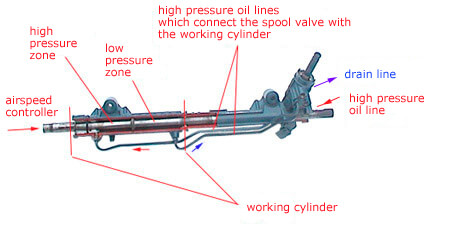Steering system with the hydraulic steering booster was designed to make control of the vehicle more comfortable and precise in different operating modes. In addition, it contributes to the safety of driving. There are 2 main types of the steering systems which are used in modern cars, namely the rack-and-pinion and worm-type.
Both can be equipped with a hydraulic booster.
The advantages of the power steering system over the steering without hydraulic booster are best felt when you are parking or driving at a low speed.
There can be distinguished 2 types of the power steering systems. The first has a constant coefficient of power assistance and the second, where the coefficient depends on the speed (SERVOTRONIC).


